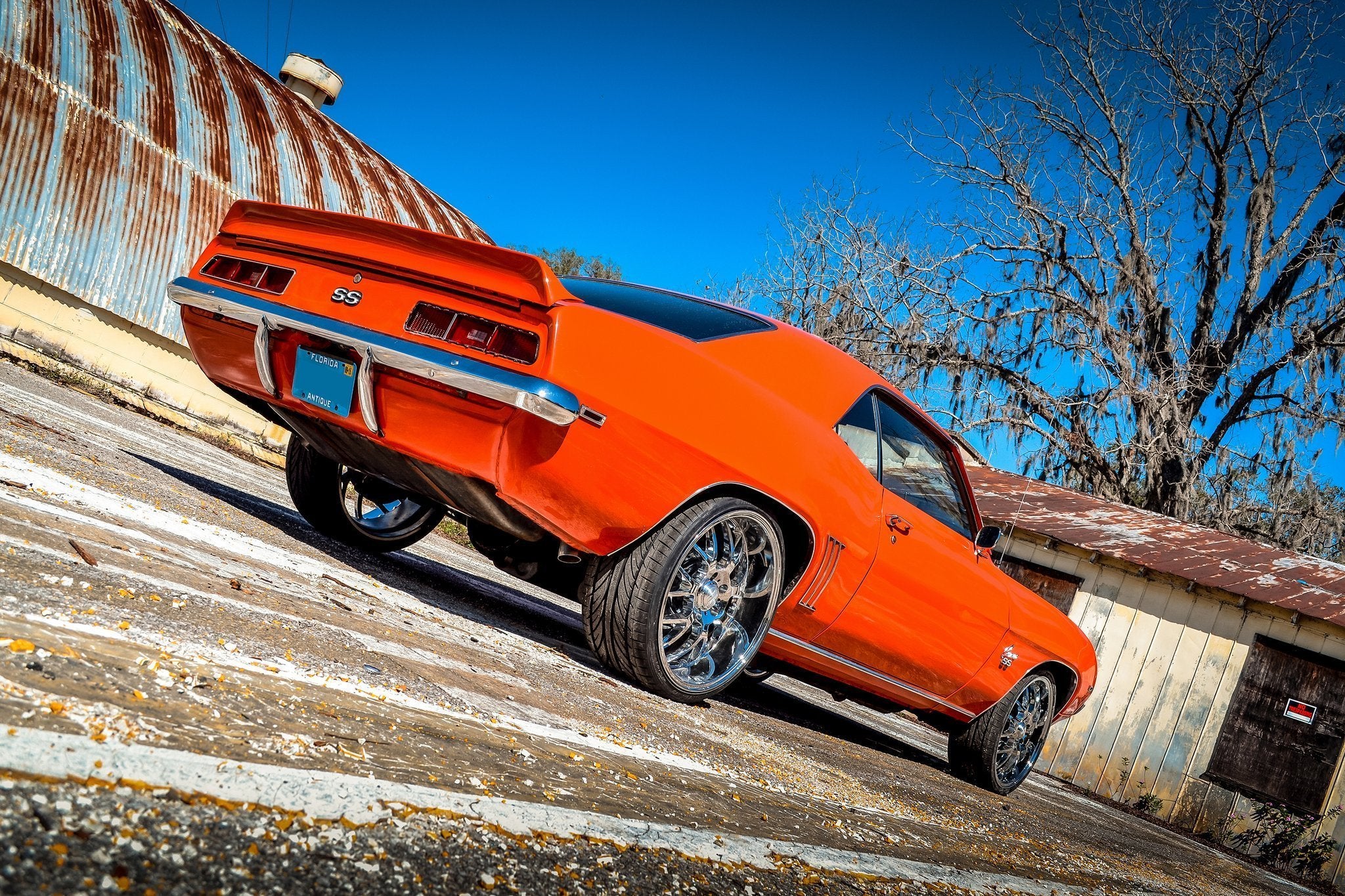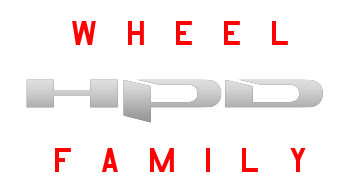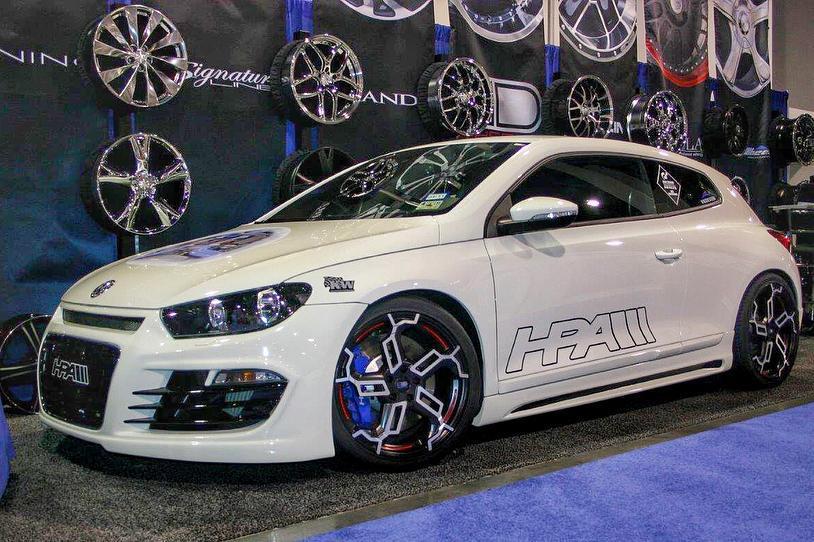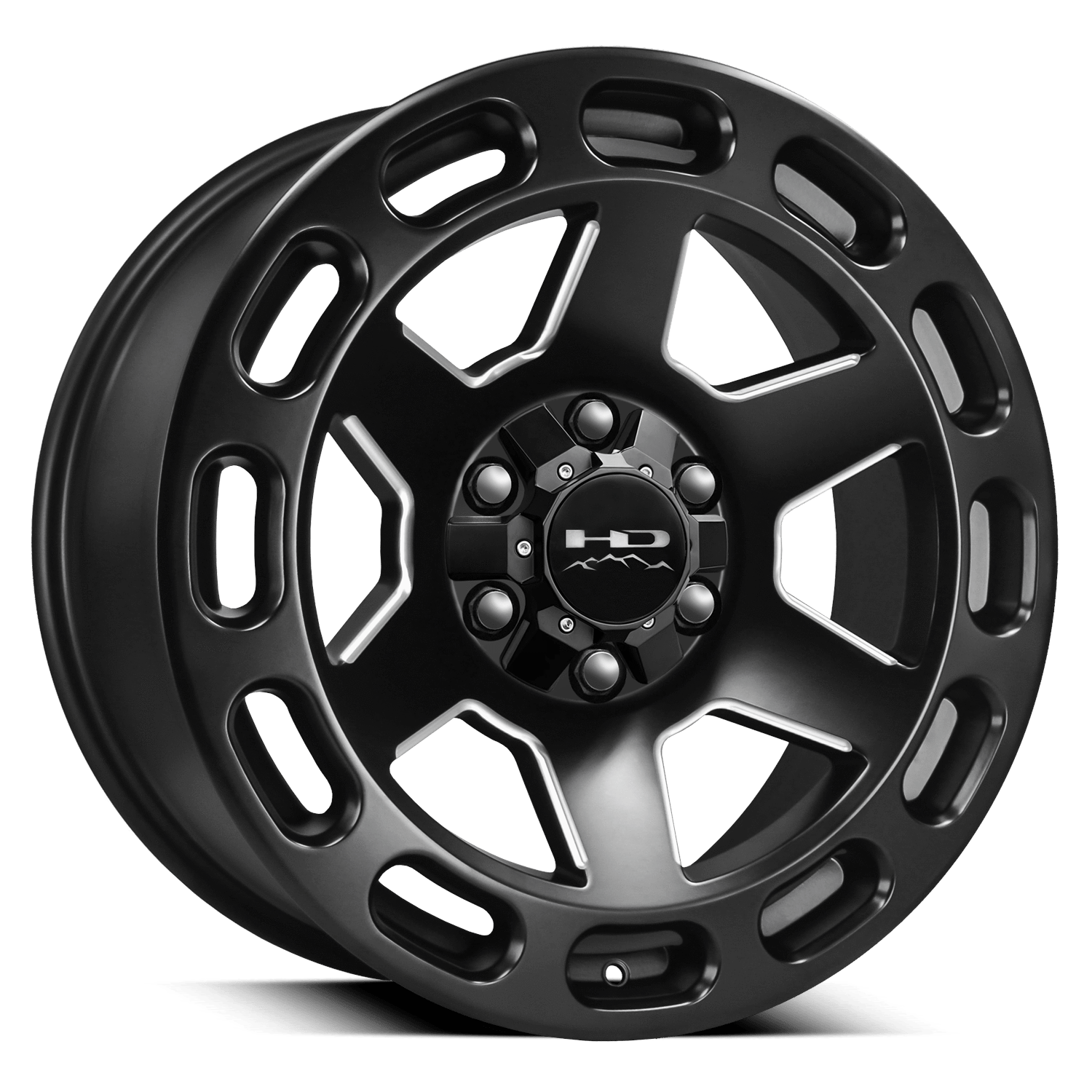
Staggered Wheels and Rims Explained
If you drive – or have ever seen – a vehicle that has rear wheels that are different sizes than those on in the front, then that would be described as a staggered fitment or staggered application. Such a wheel configuration is common for rear-drive vehicles, like the Ford Mustang or similar hi-performance vehicles. In such cases, typically the difference in the front and rear wheels involves width, and the wider wheels are usually found on the rear. That’s because a wider wheel allows a vehicle to grip the pavement better from the rear, thereby leading to enhanced acceleration and grip. Staggering the wheels in a way where they’re wider in the rear than they are in the front also helps make the vehicle look sleeker.
However, it’s also worth noting that wheel width isn’t the only variable that may be staggered. Some vehicles may also have wheels larger in diameter in the rear compared to the front. These are more typical on sports cars that have been modified in the aftermarket. And when it comes to differences in wheel diameter, there’s also bound to be a difference in the width of the lip, which enhances the look and makes the vehicle look more aggressive.
Noting this basic overview, you might be wondering just whether or not it’s worth it to outfit your vehicle with staggered wheels and rims? We’ll weigh the pros and cons of this piece:
The Pros
There are several notable advantages to staggering your wheels and rims, and we mentioned two big ones in the overview of Aesthetics and Performance. And to repeat, it is true that the right vehicle will have a more commanding presence and benefit from performance benefits thanks to enhanced road grip when outfitted with larger (or wider) tires in the rear. But these are hardly the only benefits of staggered wheels & tires. Here are a few more worth noting:
- Weight support: Some cars (think: Porches) have the majority of their weight over one axle. If this is the case, then it makes sense to have larger wheels in the back than the vehicle has in the front, assuming that greater amount of weight is in the rear. Note that this wouldn’t really apply if vehicles carried the majority of their weight in the front, as vehicles should always stagger from back to front.
- Stability: In addition to performance, larger or wider tires in a vehicle’s rear can also mean enhanced vehicle stability, especially when it comes to performance vehicles that you don’t want veering from side to side when you put the pedal to the metal. In addition to this, staggered wheels also often permit more responsive braking and better cornering.
The Cons
Now that we’ve gone over the advantages of having staggered wheels and rims, it’s time to take a look at the disadvantages of such, so you can make the best decision for yourself whether or not your vehicle would be applicable with such a configuration. Here’s a look:
- Rotating tires every 6,000 miles or so is part of any vehicle’s routine maintenance plan. With tires of two different sizes, you can’t rotate the tires from front to back (or vice verse) to maintain even tread wear. Instead, you have to be sure that the tires are rotated laterally, whether you do it yourself or have them professionally rotated. Failure to consider this could be very detrimental.
- Convenience: Purchasing a new set is slightly more complicated with 2 different sizes.
As you can see, staggered wheels and rims make sense in a lot of situations for an assortment of vehicle types. For more information on staggered wheels and rims, and to check out our selection of products available, be sure to contact HD Wheels or visit https://hpdwheels.com/.










Leave a comment
This site is protected by hCaptcha and the hCaptcha Privacy Policy and Terms of Service apply.